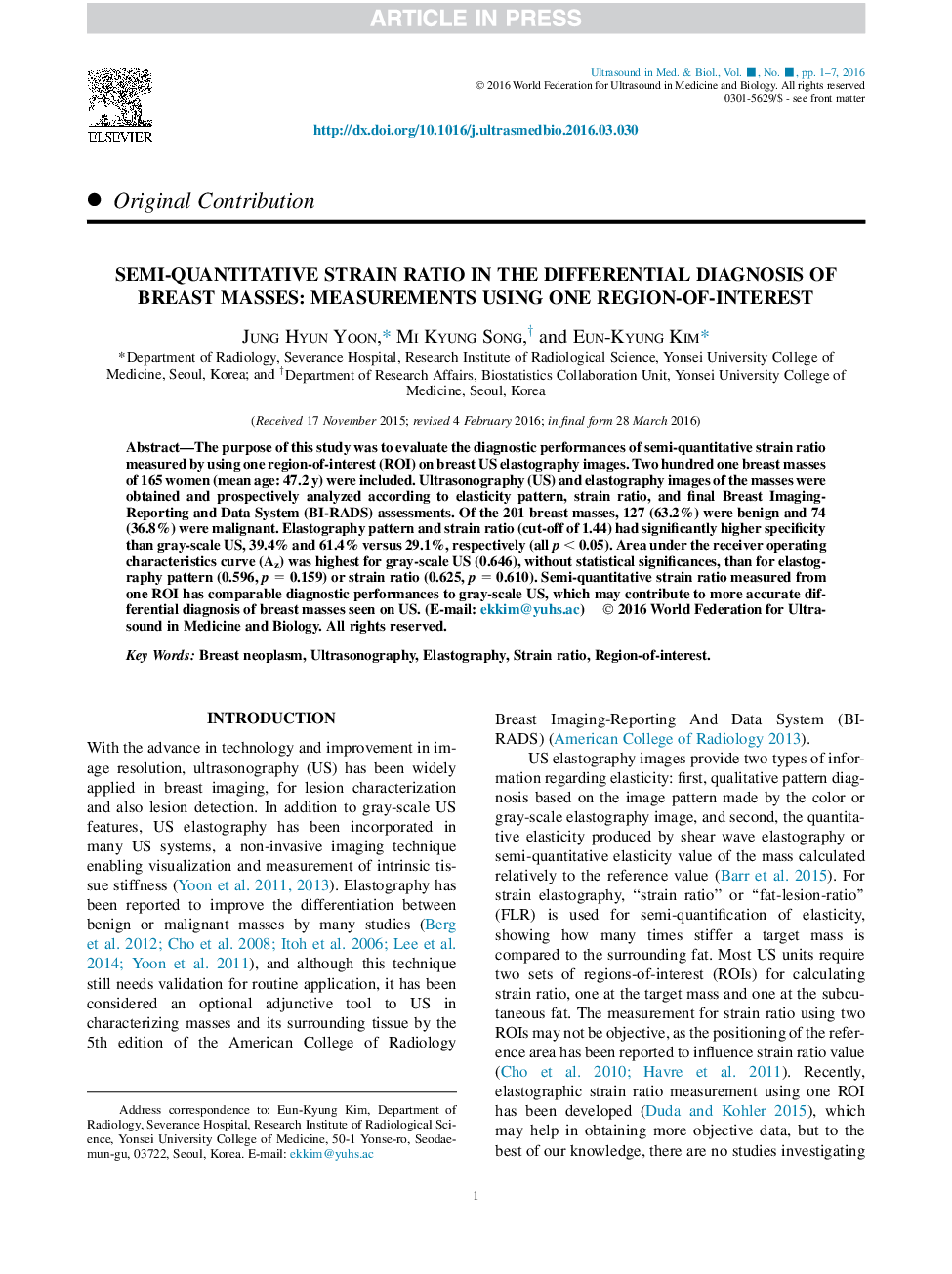| Article ID | Journal | Published Year | Pages | File Type |
|---|---|---|---|---|
| 1760173 | Ultrasound in Medicine & Biology | 2016 | 7 Pages |
Abstract
The purpose of this study was to evaluate the diagnostic performances of semi-quantitative strain ratio measured by using one region-of-interest (ROI) on breast US elastography images. Two hundred one breast masses of 165 women (mean age: 47.2 y) were included. Ultrasonography (US) and elastography images of the masses were obtained and prospectively analyzed according to elasticity pattern, strain ratio, and final Breast Imaging-Reporting and Data System (BI-RADS) assessments. Of the 201 breast masses, 127 (63.2%) were benign and 74 (36.8%) were malignant. Elastography pattern and strain ratio (cut-off of 1.44) had significantly higher specificity than gray-scale US, 39.4% and 61.4% versus 29.1%, respectively (all p < 0.05). Area under the receiver operating characteristics curve (Az) was highest for gray-scale US (0.646), without statistical significances, than for elastography pattern (0.596, p = 0.159) or strain ratio (0.625, p = 0.610). Semi-quantitative strain ratio measured from one ROI has comparable diagnostic performances to gray-scale US, which may contribute to more accurate differential diagnosis of breast masses seen on US.
Related Topics
Physical Sciences and Engineering
Physics and Astronomy
Acoustics and Ultrasonics
Authors
Jung Hyun Yoon, Mi Kyung Song, Eun-Kyung Kim,
